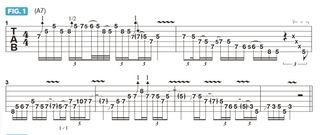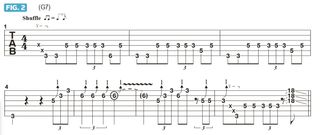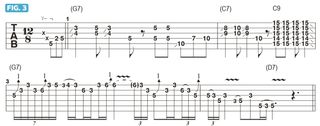“He redirected the future of blues guitar from his very first release, and his influence continues to inspire new generations of aspiring players”: Joe Bonamassa pays tribute to the late, great Stevie Ray Vaughan
One blues legend pays his dues to another, the great SRV – a player who Bonamassa says has inspired us all to play the blues

It has come to my attention that, of all of the columns I’ve created for GW, I have yet to talk about the great Stevie Ray Vaughan. Oh my god!
As a child of the ’70s, in 1983, when I was all of six years old, there were two guitar players that changed the game for me: on the rock side, it was Eddie Van Halen.
The other was Stevie Ray Vaughan, who came out of Austin wielding an old Stratocaster and a Fender amp set to stun, and turned the blues guitar world on its head. We all play like Stevie – we all share this connection to his incredible debut album, Texas Flood, and the great records that followed.
For the examples in this column, I’m playing a 1964 Candy Apple Red Strat with a “hardtail,” which means there's no tremolo system. In that way, it’s like a Telecaster, and I’m a big fan of hardtail Strats.
When I first heard Stevie, I heard licks like this (see Figure 1), which is played in 5th position, in the A blues scale (A, C, D, Eb, E, G) box, with the inclusion of the 9th, B, and the flatted 9th, Bb, Stevie routinely tore through licks like these on tracks like Texas Flood, Pride and Joy, Say What! and many others.
A real signature of his is the lick that falls on beat 2 in the first bar: on the B string, after bending G up to A, I move to the high E string and play A to B, followed by a quick hammer/pull from A to Bb, followed by a pull-off from G to E on the B string as the phrase then continues moving down the scale all the way to A on the 6th string.

The roots of this lick go back to T-Bone Walker, as well as Jimi Hendrix, and overall Stevie melded the combination of those two influences, as well as Albert King’s, in his own inimitable way.

Live at El Mocambo explodes with phenomenal playing, with tunes like So Excited.
Figure 2 is played in that style and ends with an aggressive slide down the high strings. Stevie’s playing on all of his records changed the world for me: it was the tone, phrasing, infinite amount of ideas and flawless articulation, with a very simple toolkit of a Strat, a couple of Vibroverbs, a Tube Screamer and a wah pedal.

Jackson Browne lent Stevie his Dumble amp for the Texas Flood recording sessions, and Figures 3 and 4 illustrate phrases played in the key of G, along the lines of how Stevie kicks off the title track.

Figure 4 is a good representation of Albert King’s influence, delivered as only Stevie could. I spent countless hours jamming along to Tin Pan Alley (Couldn’t Stand the Weather), and at that time, Stevie was certainly one of my biggest influences.
He redirected the future of blues guitar from his very first release, and his influence continues to inspire new generations of aspiring players.
Get The Pick Newsletter
All the latest guitar news, interviews, lessons, reviews, deals and more, direct to your inbox!
Joe Bonamassa is one of the world’s most popular and successful blues-rock guitarists – not to mention a top producer and de facto ambassador of the blues (and of the guitar in general).

It’s a soloing strategy that T-Bone Walker, B.B. King and Albert King all used, and will instantly make your blues solos sound more pro – learn parallel pentatonics and you will set your playing free

“For me, it’s not enough to play an idea once and then move on. I’d rather develop my initial phrase and then morph it into 10 different, thematically connected ones”: Jared James Nichols shows you how to use call-and-response blues phrasing
Most Popular







